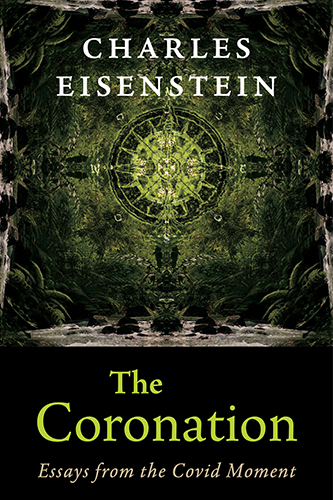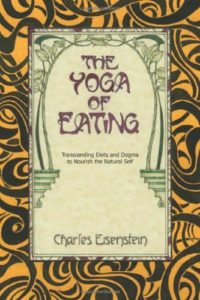Climate — A New Story
Chapters
Chapter 3: The Climate Spectrum and Beyond
The End of the World
A politically progressive friend described her experience of spending a week with her in-laws, who consumed a steady diet of Fox News. By the end of the week, she said, she understood how it seemed to them that anyone who voted for Hillary Clinton must be an idiot. The conservative media creates its own reality bubble.
The same might be said for the world of climate skepticism, and for its mirror opposite, the world of climate catastrophism. I encourage the reader to spend some time in each of these reality bubbles. Anchored by scientists and writers like Guy McPherson, Paul Ehrlich, Paul Beckwith, David Wallace-Wells, and Malcolm Light, the catastrophist camp criticizes mainstream climate science along many of the same lines as the skeptics do. It says that scientists ignore data that doesn’t fit their worldview, or for which they are psychologically unprepared. Even when they do realize that it is already too late, political expediency induces them to tone down their forecasts; privately, they are much more pessimistic than their public statements indicate. IPCC reports are similarly watered down under political pressure. The truth, they say, is that we are doomed.
Oddly enough, climate skeptics and climate catastrophists come to a similar place of inaction from entirely opposite directions. What does it matter, when one party disengages because they think there is no problem, and the other disengages because they think there’s no solution?
Apocalyptic thinking in general fosters a complicity with the very systems that it critiques. Seemingly radical, the catastrophist position is in practical terms completely compatible with the continuation of business-as-usual. Making a similar point, the scholar Eileen Crist writes:
Indeed fatalism is a mind-set that strengthens the trends that generate it by fostering compliance to those very trends. The compliance that fatalism effects is invisible to the fatalistic thinker, who does not regard him or herself as a conformist, but simply as a realist.[17]
The “realism” upon which so much climate discussion is based takes for granted many of the same beliefs and systems that are generating the crisis to begin with. What we believe to be real, though, may be a projection of the story we live under. As for the systems, humans created all of them. Humans can change all of them.
Catastrophist prognostications of doom range from massive disruptions that would render the tropics uninhabitable and devastate food supplies, all the way to near-term extinction of human beings (in my lifetime) or even a runaway greenhouse effect that would make Earth like Venus. I invite the reader to browse Guy McPherson’s website, “Nature Bats Last,” for a catalog of the scientific evidence behind their position. Basically, near-term extinction depends on positive feedback loops that accelerate climate change. For example:
- Arctic warming melts undersea methane hydrates, releasing methane into the atmosphere and causing more warming.
- The same occurs for stores of methane and carbon dioxide in permafrost.
- Hotter temperatures generate more water vapor, which traps more heat.
- Arctic ice melt decreases albedo (reflectivity), generating more warming from the sun.
- Warming causes shifting climatic patterns, leading to forest fires and peat fires, creating soot that dirties the snow, causing faster melting.
- Methane release from bodies of freshwater increases with higher temperatures.
- More atmospheric CO2 leads to more carbonic acid in the rain, which dissolves calcium carbonate rocks, releasing more CO2 into the air.
Most of the alarm centers on methane. According to Malcolm Light, the methane under the Arctic Ocean alone is a hundred times greater than that sufficient to instigate a major extinction event.[18] If even 1 percent is released, it would cause a 10°C rise in global temperature—enough to ensure the demise of all vertebrates.
And, say the catastrophists, this is already well under way and irreversible. The feedbacks are already in place. The Arctic will soon be ice-free. The Larsen B and Larsen C ice shelves are on the verge of collapse. The West Antarctic Ice Sheet is losing 150 cubic kilometers of ice per year. The oceans are warming at twice the rate previously thought. Sea level rise has gone exponential.
I will not repeat the previous exercise and walk the reader through the mainstream responses to these points, the responses to the responses, and so forth. Methane levels haven’t risen as quickly as the catastrophists predict. Yes, they have—the methane has gone to a higher atmospheric layer than where the measurements are taken. No, they haven’t—that claim is speculation based on sketchy data. Yes, they have …
I seriously recommend the interested reader spend a solid week reading catastrophist literature, and another solid week reading skeptic literature (the website Watts Up With That? is a good place to start, or Matt Ridley’s essay “The Climate Wars’ Damage to Science”).[19] It is amazing how intelligent human beings, all sourcing information from what we call science, can come to such dramatically opposed conclusions. What’s going on here? Each camp wields various psychological and political theories to explain the intransigence of the other. Each side is certain that the science is with themselves.
For reasons that will become apparent in this book, I do not accept the catastrophist narrative. It does, however, have three important truths to offer.
First, a great dying is indeed under way on this planet, and human activity is responsible for it. Most people and institutions have their heads in the sand and do not see it or allow themselves to feel it.
Second, we are indeed facing the end of the world. Not the literal end of civilization or the human species, but a transition so profound that on the other side of it, it will seem like we are living in a different world. That is how deep the changes must go for the ecological crisis to be resolved. We face an initiation, a metamorphosis, into a new kind of civilization. From this place, what is possible, practical, and realistic changes as well. Our successful graduation to a new world is by no means guaranteed; nonetheless, the catastrophists are channeling the truth of a possibility. They see the necessity of a death phase, the dying of our present collective self; they do not see the rebirth. And that is normal. In a true initiatory ordeal, often there is a moment when there seems no hope of ever making it through.
Third, the catastrophists are right that conventional means, methods, and mindsets are far insufficient to the task of healing the planet. The catastrophists are like the voice that tells the man in the maze, “Just stop.” They do not recognize that after this stopping a new compass becomes available, a song that can guide us out. The situation is hopeless, yes—but only from within the logic and worldview that entrap us. That worldview (which has generated the crisis to begin with) renders us impotent, because its solution set is entirely insufficient to the task at hand.
Many of my readers have probably had at least one experience in their lives that violated what they’d believed to be possible. A precognitive dream, a healing of an “incurable” disease, an uncannily accurate psychic reading, an amazing synchronicity, an encounter with a UFO—something that implied “reality is much bigger than we’ve been told.” If you are one of them, I ask: Does your despair take that into account? Or do you exclude such considerations from your “realism”?
Ironically, some catastrophists in their despair have indeed hit upon a significant theme of the song that can lead us out. They are saying that since it is hopeless, we might as well dedicate our lives to love, beauty, and life. Yes! That is the starting point, because our current predicament is the result of a long history of denying love, beauty, and life. The revolution is love. What becomes possible then?
Translated into practical action, this change of heart is ultimately more important to healing the climate than the things the conventional alarmists are calling for. It is as if giving up on saving the world opens us up to doing the things that will save the world.
End Notes
[17] Crist (2007), 54.
[18] Light (2014).
[19] Ridley (2015). Perhaps in an effort to establish its credibility, this essay indicts as pseudoscience other deviations from conventional opinion, such as belief in homeopathy or the dangers of genetically modified food.






